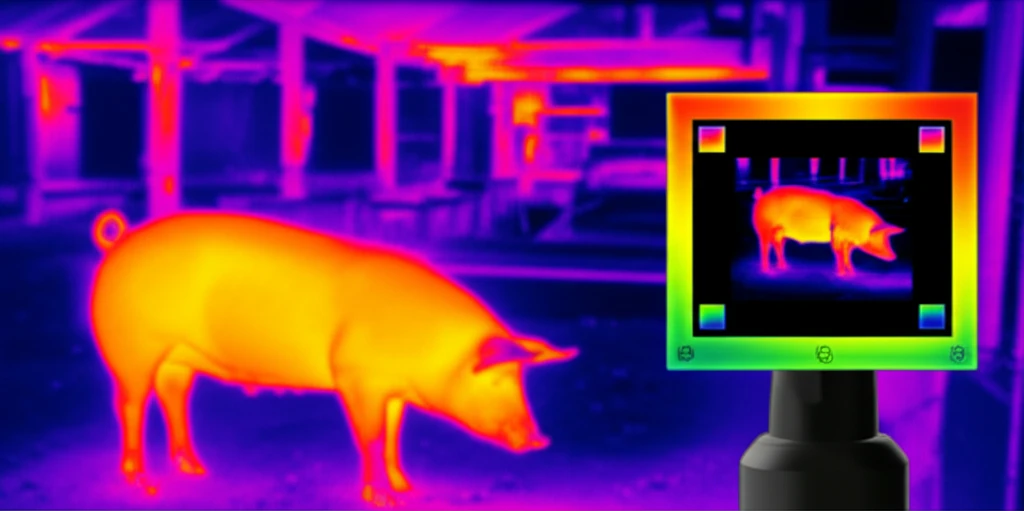
Pig Health Undercover: Thermal Imaging Exposes Early Disease Signs
"New research reveals how thermal imaging can quickly detect Salmonella and E. coli infections in pigs, offering a non-invasive way to improve animal welfare and reduce economic losses."
Infections from pathogens like Salmonella and E. coli pose significant challenges in pig production, impacting animal welfare and leading to economic losses. Early detection is crucial to prevent disease outbreaks and reduce the need for costly interventions.
Traditional methods of detecting illness in pigs are often ineffective and can be stressful for the animals. However, innovative technologies offer promising solutions. Thermal imaging, which measures body surface temperature, has emerged as a potential tool for the early detection of disease signs in pigs.
This article explores the findings of a study that investigated the use of thermal imaging to detect Salmonella typhimurium and E. coli infections in pigs. By monitoring body temperature patterns, researchers aimed to identify early indicators of disease and assess the effectiveness of thermal imaging as a diagnostic tool.
How Thermal Imaging Spots Trouble: The Science Behind the Scan

The study involved 27 piglets randomly assigned to three groups: a control group, a group infected with Salmonella typhimurium, and a group infected with E. coli. Researchers tracked the piglets' body temperatures using thermal imaging at regular intervals over 14 days post-inoculation. They also monitored growth performance indicators such as average daily gain (ADG), average daily feed intake (ADFI), and gain:feed ratio.
- Thermal imaging effectively detected early signs of disease in pigs.
- Salmonella infection led to elevated body temperatures.
- E. coli infection resulted in subnormal body temperatures.
- Growth performance was negatively impacted by both infections.
The Future of Pig Farming: Smart Tech for Healthier Herds
Thermal imaging offers a valuable tool for modern pig farming, enabling continuous and non-invasive monitoring of animal health. This technology can help farmers detect disease early, reduce the spread of infection, and improve overall animal welfare.
By integrating thermal imaging into routine farm management practices, farmers can minimize the need for antibiotics, reduce economic losses, and ensure a more sustainable and ethical approach to pig production.
Further research and development in thermal imaging technology could lead to even more advanced applications in animal health monitoring, paving the way for precision livestock farming and improved food safety.
